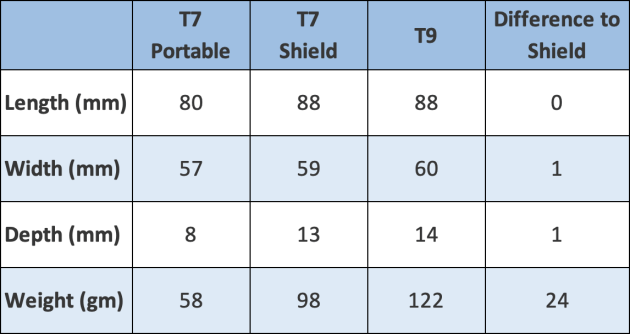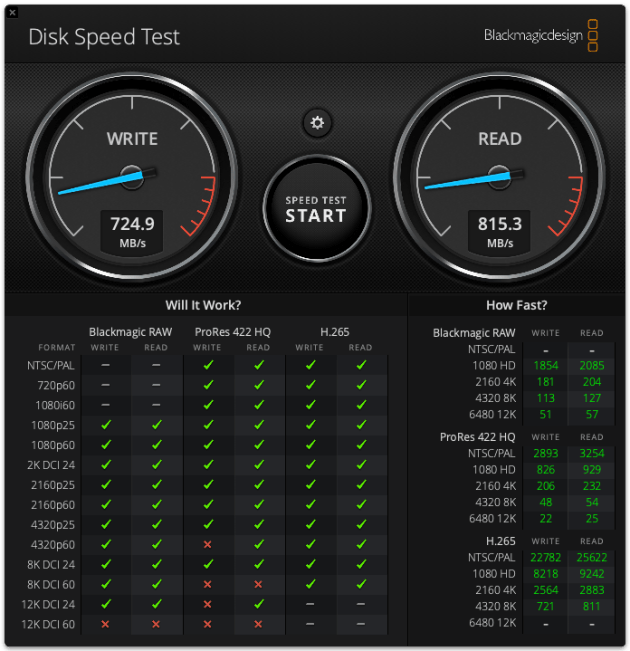Review: Samsung T9 portable SSD
Five criteria are important to me in a portable hard drive; size/weight, durability /reliability, read/write speed, secure connectivity, and green credentials.
I’ve been a fan of the Samsung SSDs for a while now, using a 2TB base version of the T7 as my primary, at home, external drive to store all my photographs, and taking a 500GB T7 Shield for work in the field.

When I heard Samsung was launching an even faster SSD – the T9 - I was really interested to see how it fared based on my key criteria.
Firstly, some basics. Designed to have compatibility with a range of host devices (e.g. MacOS, Windows, Android phones, gaming consoles etc.) the T9 comes in three size options (1TB, 2TB and 4TB) and one colour option, black.
With a single USB-C port, in the box you’ll find a 0.45-metre cable USB-C-to-USB-C and USB-C-to-USB-A cable, and pre-installed on the drive Samsung’s management software, allowing you to set a password for AES 256-bit hardware encryption, and also get the latest firmware updates. And the T9 comes with a five-year warranty.

Now if you don’t want to read any further, and know about the Samsung T7 Shield specifications, in summary, the T9 takes the T7 Shield's formula, maintaining its 3m drop proof rating (however it is unclear if it maintains the T7 Shield IP/ingress rating), improves the warranty from 3 to 5 years, and most impressively, doubles its read/write speed from up to 1000MB/s to 2000MB/s; all this for miniscule increase in size and a small increase in weight.
Having said that, it’s important to note the ability to access this speed boost has a BIG proviso; more on that later.
Size/weight
Made from an aluminium body covered with a protective textured wave pattern rubber frame, the T9 feels nice to hold and looks good. The USB-C connector includes an adjacent blue status LED, so you know if it’s active.
With external dimensions of 88mm x 60mm x 14mm, and weighing 122gms, compared to the T7 Shield it isn’t any longer and only 1mm wider and deeper, but is 24gm heavier. Noticeable, yes, but still very small, light, and very transportable.

Durability/reliability (i.e shock and ingress protection)
Like the T7 Shield, the T9 has been tested to survive a free fall from three metres onto a metal plate. I don’t see many situations where I’d drop a portable hard drive from that height, but as always, the tougher the better, and three meters is more than enough for me.
Interestingly, unlike the T7 Shield, the TP doesn’t come with an Ingress Protection (IP) score. The T7 Shield has an IP of 65, meaning it was: i) totally dust tight (that’s what the ‘6’ stood for) and safe against low-pressure jets (6.3 mm) of water directed from any angle (that’s what the ‘5’ stood for).

Does this mean the T9 doesn’t possess the same ingress protection? It really seems as securely encased as the T7 Shield, and there is no reason to think that it doesn’t, but of course without a formal rating, we can’t assume yes.
What is improved over the T7 Shield is the warranty, up from a limited three years to a limited five years. Does this mean it’s now more reliable? Hard to say, but linking back to the shock resistance, it is also worth reading the fine print where it says “No warranty is provided for any physical damage”.
So if you drop it, just hope it doesn’t physically break, as you’re not covered.
Read/write speed
OK, this is where the T9 stands out and with a noticeable improvement over the T7.
Unlike the T7 series, the T9 supports a USB 3.2 Gen 2x2 interface protocol, which offers speeds up to 20GBps.
With stated sequential read/write speed of up to 2,000MB/s and 2,000MB/s on the 4TB models (the stated write speed on the 1TB and 2TB is a little less, up to 1950 MB/s), running the Blackmagic Design benchmark on my MacBook Air M1 with a 4TB model, repartitioned to GUID Partition Map APFS, 1GB file transfer, I saw read/write speeds of 815MB/s and 725MB/s MB/s respectively.

Compared to the T7 Shield, this was a sizable improvement of more than 145 MB/s for the read and a modest 25 MB/s for write.
But hang on, why are these speeds over 50% slower than the technical top speeds reported by Samsung?
Well, this is in part an issue an issue with my MacBook Air M1. It doesn’t support 3.2 Gen 2x2, only 3.2 Gen 2, which is just one lane of the dual lane interface.
What this means is if you have a Mac, theses drives won’t have the ability to work at their fullest potential if directly plugged in, even though the newer Macs will support faster 40GB/s Thunderbolt 4 speeds. This is disappointing and frustrating to say the least.
Is this an Apple or Samsung issue?
One could question why doesn’t Apple allow for 3.2 Gen 2x2 speeds. Conversely, one could ask why didn’t Samsung make the T9 with a Thunderbolt/USB 4 port, potentially allowing these drives to work full speed on the newer Macs.
The answer to these questions is way above my paygrade, but if I was guessing, to do with cost; it would have made these much more expensive. One potential workaround might be to use a monitor or hub that has both Thunderbolt and USB-C 3.2 Gen 2x2 ports.
You could then try using this as an interface, but for Mac users like myself who don’t, I guess we are where we are, and the more relevant question for a Mac user is, what do the speeds mean in the real world?
On my MacBook Air (M1 chip) I could transfer 100GB in a little under 2 minutes 30 seconds. With my cinematography hat on, as this is where I put such SSD storage drives practically to the test, it checked, and indeed exceeded, every relevant working “Will it work?” benchmark, allowing me to work on most 8K video files.
Speaking of video, it’s also worth noting that like the T7, the T9 offers what Samsung calls ‘TurboWrite technology’ to help ensure a longer maintained high write speed when transferring large files.
When writing large files to a SSD, speed can sometimes start to slow, but by also providing a super high-performance write buffer area (think cache), it means that any potential slowdown in writing large files will take longer.
How long depends upon the buffer size and this depends upon the drive capacity. The 1TB has a 22GB buffer, the 2TB an 88GB buffer and the 4TB a 180GB.
As with the T7, the T9 has a feature Samsung calls ‘Dynamic Thermal Guard’. This adjusts the drive's performance to ensure that the casing remains below the international (IEC 62368-1) standard of 60°C so is not painfully hot to touch and also minimises performance drops from overheating with prolonged usage.

Secure connectivity
When I say ‘secure connectivity’ what I mean is how well a drive maintains both its physical and functional connection, when it, or the computer are moved/wiggled, or the computer is picked up and the external hard drive is left to dangle.
There is nothing worse than your SSD falling off, or just the dreaded “disk not properly ejected” message, from even a slight movement. And yes, I know I probably shouldn’t ‘dangle’ an SSD from the laptop, but I do, and this is a real-world test.
One thing I’ve always liked about the T5 and base T7 was how well they maintained connectivity. My base T7 Shield wasn’t that good, but the T9 is excellent. A really secure connection.
Green credentials
Finally, I have a view that wherever we spend our money, we are in effect saying to the supplier, ‘Hey, I agree with what you do so much, I’m going to give you my money to encourage you to keep doing it’.
With the T9, the packaging seemed not to have unnecessary plastic which is great.
More broadly, it’s worth highlighting in Samsung’s 2023 Sustainability report the company noted a target of net zero for the DX (Device eXperience) Division (where the T9 sits) by 2030, and a plan to do this company-wide by 2050.
Is six years for DX Division OK and is twenty-six years for the company as a whole acceptable, and are others doing it better? This is something to ponder.
Should you buy the Samsung T9?
This is an interesting one. Compared to the T7 Shield, if you are in the market for a compact Samsung SSD where you can access blisteringly fast read/write speeds, one that has good shock resistance (but no IP rating), great connectivity, looks and feels good, and is backed by a 5-year warranty, then the answer is clearly yes.
But what if you have a new Mac that can’t easily access the full theoretical speeds it offers?
Sure, there are some physically larger ‘portable’ external drives out there that will work more quickly with a Mac, but if you’re a Samsung fan, given the size, the other features I mentioned (e.g. secure connectivity), and given that the T9 is only between $80 and $150 more expensive than say the T7 Shield, why wouldn’t you?


